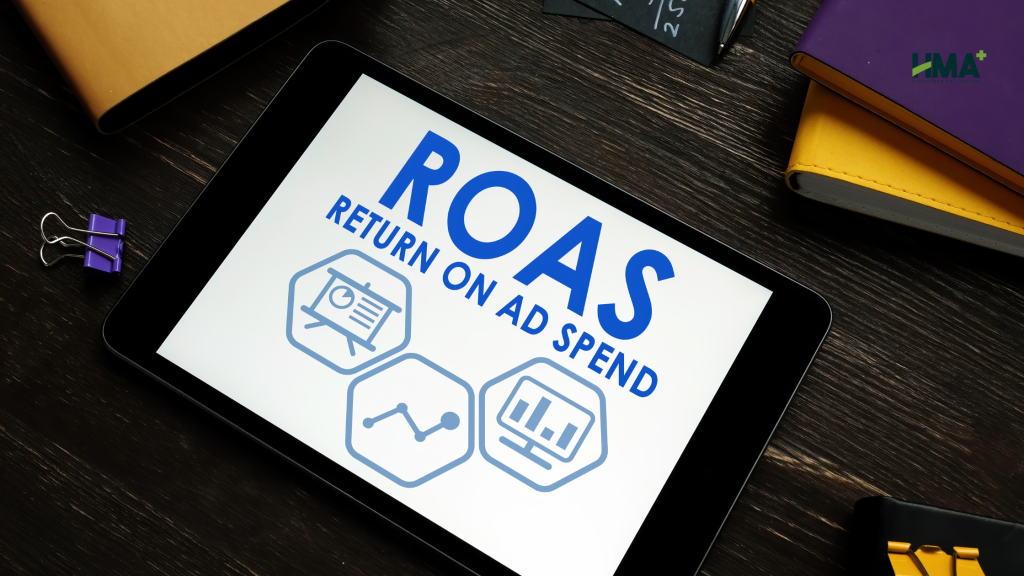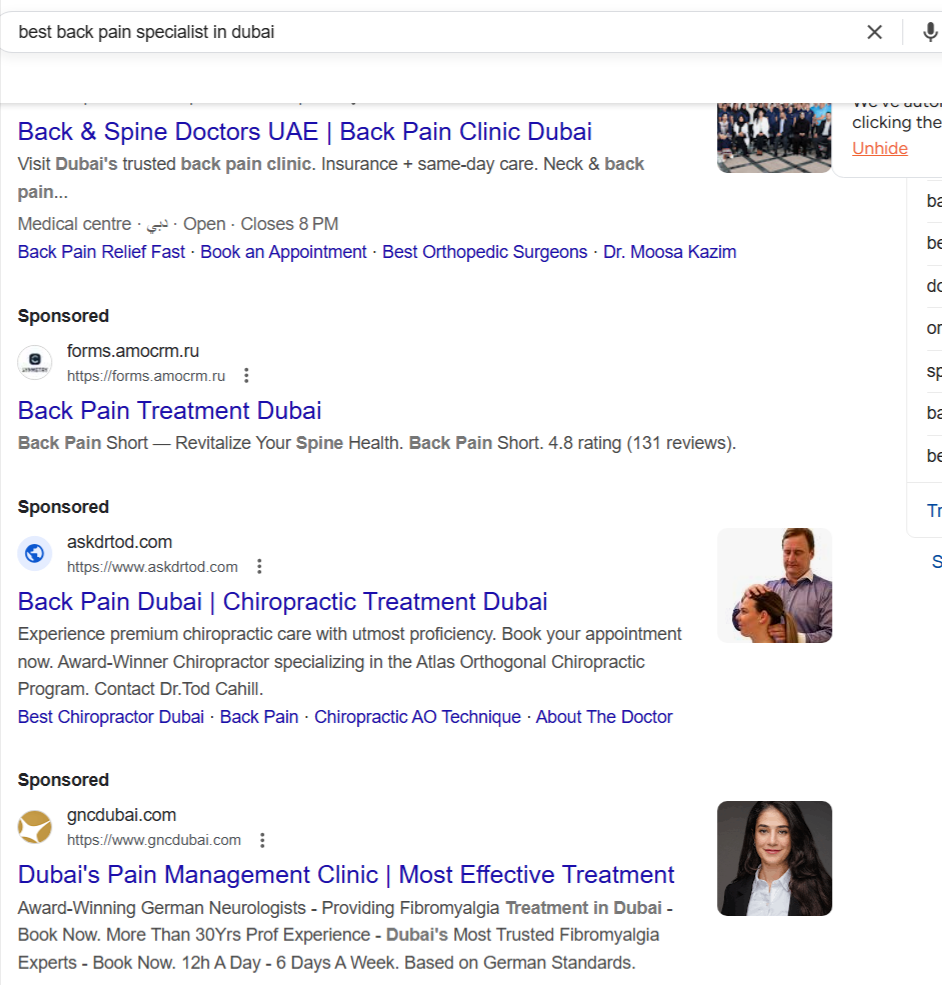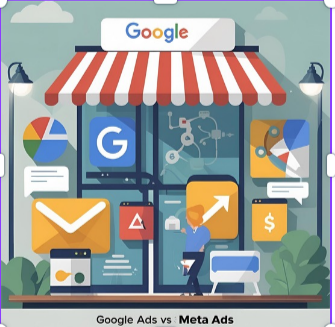
Imagine this A potential patient in Dubai starts experiencing persistent back pain. Their first instinct? A quick Google search: “best back pain specialist in Dubai.” That’s Google Ads stepping in at the moment of need. But what if, days before, they saw a compelling Facebook video from your clinic showcasing successful back pain treatments and patient testimonials? That’s Meta Ads subtly planting the seed of awareness and trust. |

In today’s dynamic healthcare environment, relying on just one advertising platform is like trying to navigate with a single eye open.
To truly connect with individuals throughout their health journey – from initial awareness to seeking treatment – smart healthcare marketers are discovering the undeniable power of combining Google Ads and Meta Ads.
This isn’t just about running two separate campaigns; it’s about orchestrating a symphony where each platform amplifies the other, creating a holistic and highly effective strategy.
Ready to unlock the advantages of Google Ads and Meta Ads and see how this strategic alliance can transform your healthcare marketing results? Let’s explore the exciting possibilities!
Before we delve into combining them, it’s essential to understand the unique strengths of each platform. The difference between Google Ads and Meta Ads lies primarily in user intent and targeting capabilities.

Google Ads: Captures intent. When someone searches on Google for “best knee replacement surgeon in Dubai” or “symptoms of heart disease,” they are actively seeking information or solutions.
Google Ads marketing allows you to place your relevant healthcare services directly in front of these high-intent users at the precise moment they need them. Think of it as answering a direct call for help.
Google processes over 3.5 billion searches per day, which is a massive pool of potential patients actively looking for healthcare information.
Meta Ads (Facebook and Instagram): Discovers interest. Meta’s strength lies in its rich user profiles and sophisticated targeting options based on demographics, interests, behaviors, and more.
You can reach potential patients who might not be actively searching for your services yet but are likely to be interested based on their online activity and connections.
💡Over 3 billion people use Facebook and Instagram every month. This vast audience offers unparalleled opportunities for reaching specific patient demographics.
The magic truly happens when you strategically integrate Meta and Google Ads. By understanding how users move through the marketing funnel – from awareness to consideration to conversion – you can use each platform to nurture them at the right stage.
Awareness of Google ads vs Meta ads: Introduce your healthcare brand and services to a broad audience.
Meta Ads: Ideal for visually engaging campaigns that build brand recognition and introduce solutions to potential problems users might not even be actively searching for yet. You can target users interested in health and wellness topics, specific conditions, or related demographics.
Google Ads: While primarily for intent-based searches, you can utilize display ads on the Google Display Network to increase brand visibility across relevant websites and apps.
How many weeks for the awareness campaign ads Meta and Google? Awareness campaigns on both platforms can run for several weeks or even months, depending on your budget and reach goals. Consistency is key to building brand recognition. A typical initial phase might be 4-8 weeks to establish a baseline.
Here are some actionable strategies to combine the power of Google Ads and Meta Ads for superior results:

The advantages of Google Ads and Meta Ads working in harmony are numerous:
Navigating the nuances of Google Ads and Meta Ads can be challenging, especially within the nuanced healthcare industry.
At HMA, we possess the expertise and deep understanding to craft tailored strategies that seamlessly integrate these powerful platforms, driving meaningful results for your healthcare practice or organization.